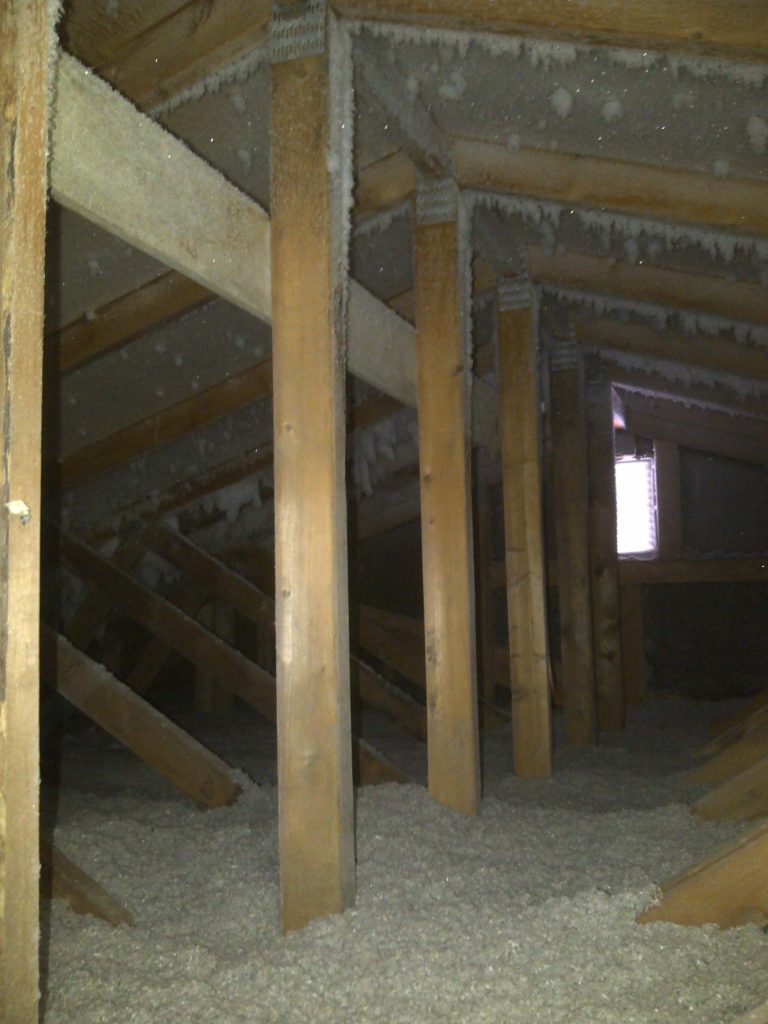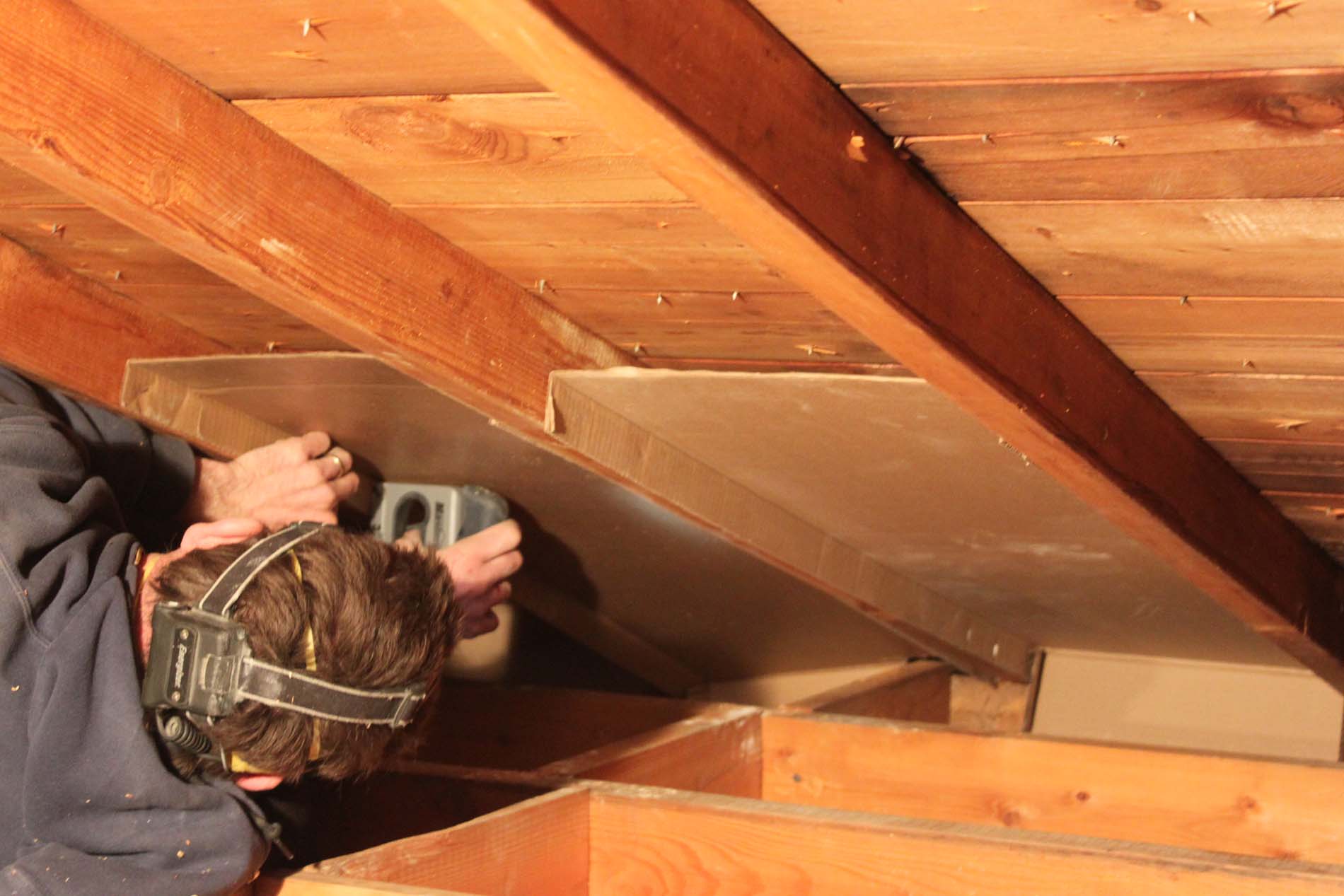Condensation in a house is produced by people, plants, pets, and normal activities such as breathing, showering and cooking. The more activity, the more humidity. Modern houses are more tightly sealed than in the days when windows, weather-stripping, and vapour barriers were inferior to what we have today. The downside of a well-sealed house is that humidity can build up to unhealthy levels for the inhabitants and for the house. Humidity can condense on windows, baseboards, ceiling and wall corners, and inside closets. Humidity can make its way into the attic and can cause problems when it condenses on structural members like rafters and roof decking. In the winter, condensation in the form of ice can build up to levels that, upon melting in the spring, can damage the home insulation, attic insulation, ceiling, and walls.
When your Above All Insulation estimator evaluates your home, he will be able to talk about proper humidity levels and what can be done to get your humidity under control, if necessary. Sometimes this means that exhaust fans need to be used for longer periods of time when cooking or showering. If a house does not already have an exhaust fan, we can install one for you. Adequate attic ventilation must also be considered. And in the process of upgrading the insulation in an attic, our insulators will vapour seal attic floor penetrations such as plumbing stacks and ceiling electrical boxes.

